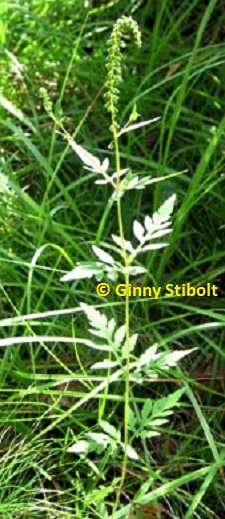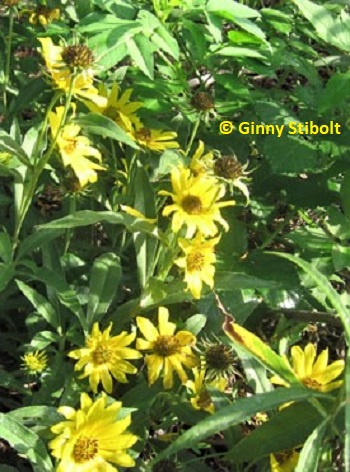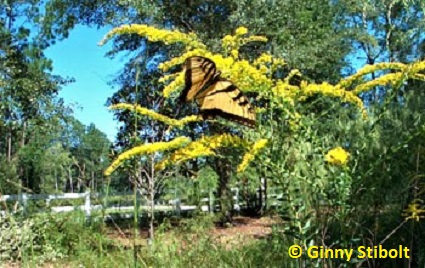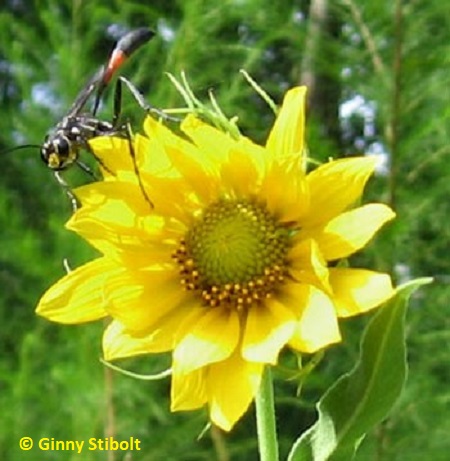Adventures of a Transplanted Gardener |
||||
There's gold in our meadows
|
||||
 |
Apparently people blamed goldenrod for ragweed's rambunctious pollen generation, because they could see the goldenrod's beautiful flowers and not the inconspicuous ragweed blossoms that often occur nearby.
Ragweed is a native plant and birds will eat its seeds, but there is nothing else good about this plant. I pull it out when I spot in in our meadows. Its genus name, Ambrosia, means food for the gods and it was named by Linnaeus, the inventor of our scientific binomial system. Linnaeus gave all kinds of reasons for assigning the Latinized names, but this one must have been a joke.
<< This ragweed plant (A. artemisiifolia) was about ten inches tall before I yanked it out. Individual plants can range in size from six inches to six feet. Ragweed lurks in meadows or ditches waiting for a chance in invade a newly disturbed site with bare soil where it will grow taller.
|
|
Another source of gold?
Yes, there's another lovely golden late-bloomer in our meadows this year. It's the six-foot tall perennial sunflower (Helianthus maximiliania) with its array of three-inch flowers on six to ten-inch stems all along the stalk. Now in the middle of September, many of them are blooming. I planted the seeds in the spring. One set of instructions on perennial sunflowers stated that it would be unlikely to flower the first year. I guess "they" didn't consider our long growing season here in northern Florida. Maybe these late bloomers will provide color until frost. I'll let you know.
Next spring, I will transplant some of these sunflowers to areas farther back in the meadows and in places where I can fashion some support for them. Like some of the other species I described in my sunflower column, Maximilian's sunflower tends to flop over in the wind or rain and stays on the ground, but then the flowers down its stalk poke up from there. While this provides an interesting groundcover, that's not really what I was after. Plus, they've tended to fall into paths and onto other plants.
 |
Like goldenrod, sunflowers attract a wide variety of pollinators while in flower. Once the seeds set, birds come in for a feast. Maybe some of the seeds will hit the ground and sprout next year, but if the birds get them all, that's fine with me.
The gold in our meadows, and all the critters it attracts, makes my life richer. How about you?
Resources:
If you're interested in learning more about native plants, join a local chapter of the Florida Native Plant Society www.fnps.org
For more and up-to-date information on our front meadow and the other meadow areas, ny meadow article.
Read more about Linnaeus and botanical names in A plant by any common name
Ginny Stibolt is a life-long gardener, a botanist, a naturalist, and a garden writer. You may contact her or read more of her articles posted on her website: www.greengardeningmatters.com.
Copyright Ginny Stibolt



